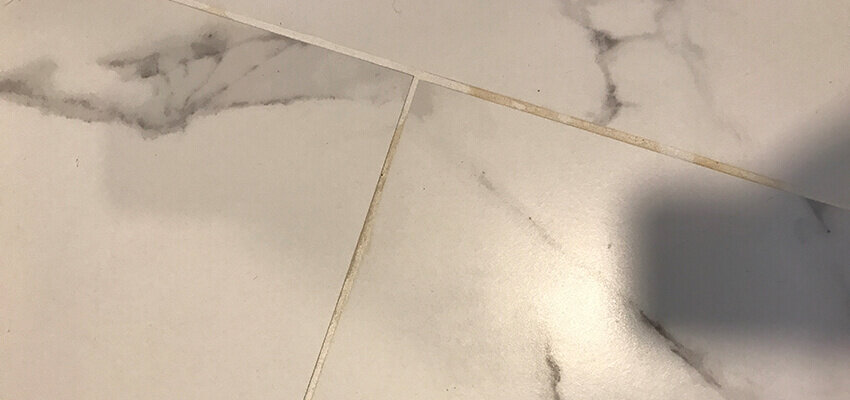March 23rd, 2012
This is part of an ongoing series to help educate both consumers and trade professionals with real answers to every day challenges in the tile industry.
Q: I noticed my grout is blotchy and uneven in color. What is wrong with it?
A: Blotchy grout is a relatively common issue. There are a number of reasons for it, but the primary cause for differences in the shading of colored grout joints throughout an installation is usually uneven curing. If grout cures slower in one part of a job than another part, darker colored joints (in comparison) will develop. The exact opposite also holds true. The faster curing grout joints will be lighter in color than grout that cures more slowly. Job conditions are the leading cause of discolored grout joints. Strict attention to the factors that cause uneven curing can bring about uniform grout installations. So, what causes uneven curing?
Here is a list of reasons grout can become discolored:
1. Improper mixing of the grout. Don’t use too much water when mixing the grout. Follow the manufacturer’s directions carefully. Also, don’t use previously opened bags that may have gained moisture or partial bags of grout on large projects. If you run out and mix a second batch, you might not have the same consistency or even the same dye lot with your grout. Finally, never add more water after initial mixing to rehydrate.
2. Excess water used in cleanup. Using too much water during cleanup will cause the grout to absorb more water in some places than others. Be sure you use clean water and clean your sponges during the cleanup.
3. Plastic spacers. Never leave the plastic spacers in the grout joint.
4. Time of day. Grout placed during the cooler part of the day will cure darker (slower) than grout set in the earlier part of the day when it is warmer.
5. Sunlight. Exposure to sunlight in one area will cause the grout to cure faster and lighter than in the shaded area.
6. Temperature. If one area is exposed to either direct heat or air conditioning blowing on it, the draft will cause uneven curing and variations. This is similar to what happens when in-floor heating is left on during the curing of a newly tiled floor…and can create a host of other problems.
7. Grout joint depth. If some grout joints are deeper than others, the grout will cure unevenly with resulting differences in color. Making sure that your grout joints are satisfactory depth will help prevent this problem. The practice of sweeping in the joints before grouting can cause uneven curing. This practice also causes the grout to be less thick in depth in other areas and increases the potential for failure. The grout joint should be cleaned out before grouting and the proper amount of time wait allowed for the setting bed to be completely set.
8. Uneven glazed edge tile. Ceramic tile that has glaze running over on the sides can cause the grout to cure unevenly, especially in instances where glaze is running over the side of one tile and is placed against a tile where there is no glaze.
9. Foot traffic. Walking over the joints before they are fully cured can also cause discoloration.
As you can see, a carefully controlled environment is essential, but not impossible, to ensure that your grout installation is perfect.
